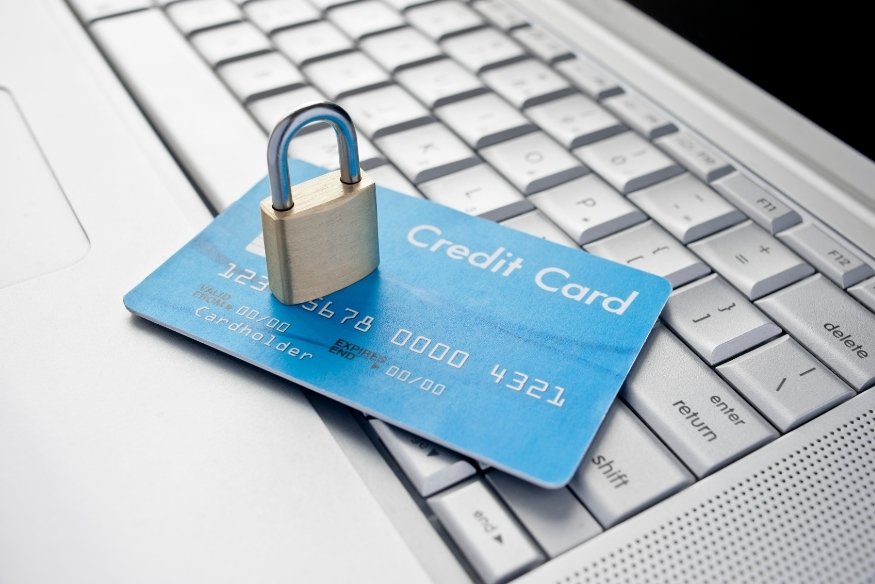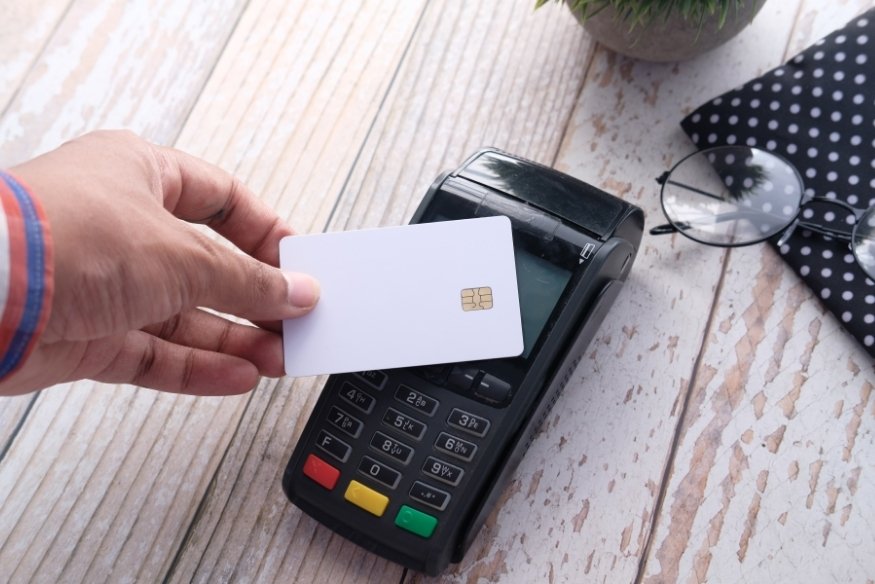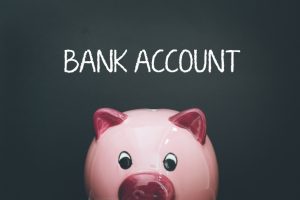In today’s increasingly digital and mobile-first world, securing your credit card information is more essential than ever. The ease of using a credit card for both online and in-store purchases has become second nature, but it also brings significant risks. From sophisticated phishing schemes to physical skimming devices, cybercriminals are becoming more advanced—and more opportunistic.
Whether you’re shopping online, traveling internationally, or making everyday purchases, these credit card safety tips will help you navigate the digital financial world with confidence, protect your hard-earned money, and avoid becoming a target.
Key Takeaways
- Monitor your daily transactions to spot unusual or unauthorized activity.
- Check your statements regularly to ensure all charges are accurate.
- Keep your credit card details private and your physical card secure.
- Understand the benefits and terms of your credit card agreement.
- Report any lost or stolen cards immediately to prevent unauthorized use.
Why Credit Card Security Matters More Than Ever

Credit card fraud has evolved. No longer limited to stolen wallets or misplaced receipts, today’s threats include malware, phishing emails, spoofed websites, and compromised payment terminals. In 2025, the financial ecosystem relies heavily on digital interactions, making it easier for hackers to intercept and misuse sensitive information.
Understanding how your credit card data can be exposed—and how criminals operate—arms you with the knowledge to stay a step ahead. Credit card security isn’t just about technology; it’s about consistent behavior, vigilance, and responsible use.
Foundational Credit Card Safety Practices
Before implementing more advanced protective measures, start with the basics. These are your first line of defense and should become part of your daily routine:
Guard Your Card Details Like You Would a Key to Your Home
Your card details are more than just numbers. They are gateways to your financial identity. Avoid sharing them over phone calls, unencrypted emails, or messaging apps. Always question requests for your card data—especially if they seem urgent or come from unfamiliar sources.
Monitor Activity Proactively
Don’t wait for fraud to find you. Activate real-time alerts for every purchase. If your issuer offers transaction categorization, use it to easily flag inconsistencies. Establish a habit of checking your account activity twice a week—even if no alerts are triggered.
Understand Your Card’s Security Features
From zero-liability policies to automatic fraud detection, your credit card comes with tools that work in your favor. Educate yourself about what’s available and how to activate or adjust them through your issuer’s portal or mobile app.
Daily Habits That Strengthen Your Credit Card Safety
Consistency is key when it comes to financial security. Integrating the following habits into your routine minimizes your exposure to risks:
Sign and Personalize Your Card
Beyond just signing, consider adding a note like “See ID” on the signature strip (if permitted by your issuer). This prompts merchants to ask for identification, adding another layer of verification.
Choose Secure, Complex PINs
Ditch predictable combinations like “1234” or “0000.” Use a sequence that’s unique and not linked to easily guessed personal information. For added security, consider changing your PIN quarterly.
Invest in a Quality Wallet or Card Case
Choose wallets with RFID protection, and ensure they close securely. Consider accessories with GPS tracking in case of loss. When at home, treat your card like cash: store it in a secure, less visible place.
Practice Discretion in Public
Avoid reading card details out loud, even in seemingly safe settings. Be especially cautious at self-checkout stations, gas pumps, or while using payment kiosks in transportation hubs.
Educate Friends and Family
If you share access to your cards with others (e.g., authorized users), ensure they follow the same safety protocols. One careless mistake could affect your entire account.
In-Store Transaction Safety: More Than Just the Swipe
Choose the Right Payment Method
Where possible, use contactless or chip-and-PIN options over magnetic stripe swipes. These methods encrypt your data and are more resilient to tampering.
Inspect Every Terminal
Before inserting your card into an unfamiliar payment machine or ATM, give it a quick visual and physical inspection. Look for glued-on components, damaged keypads, or exposed wires.
Never Let the Card Leave Your Hands
If a merchant insists on taking your card out of sight, politely request that they bring the terminal to you. This avoids potential skimming or unauthorized duplication.
Trust Your Instincts
If something feels off—whether it’s an oddly behaving terminal, an unusually high level of distraction from staff, or a poorly lit environment—abort the transaction and choose another method or location.
Maximizing Safety in Contactless Payments

Contactless payments are fast, convenient, and increasingly ubiquitous—but they are not foolproof. Here’s how to keep them safe:
Customize limits. Many card issuers let you adjust the maximum value per contactless transaction. Set yours low enough to prevent high-value theft.
Turn off NFC when not needed. If using a smartphone or smartwatch for contactless payments, disable NFC when not actively paying.
Use biometric locks. Apps like Apple Pay or Google Pay offer facial or fingerprint recognition. Always enable these features.
Advanced Online Shopping Safety Techniques
Shop on Verified Platforms Only
Avoid online marketplaces with limited reputations or new domains. Check for security seals, customer reviews, and contact information. When in doubt, research the website on review platforms before proceeding.
Use Rotating Virtual Cards
For ongoing subscriptions, use virtual cards with fixed limits or expiration dates. Some banks offer dynamic CVVs that change periodically, adding an extra layer of protection.
Protect Your Browsing Environment
Keep your browser updated and install security extensions that block tracking scripts and malicious ads. Use a dedicated device for financial transactions when possible.
Enable Two-Step Checkout Verification
Some platforms allow you to set up a second layer of approval before completing purchases. This can include app-based confirmations or facial recognition.
Monitoring and Controlling Card Activity
Know What Normal Looks Like
Familiarize yourself with your typical spending patterns. This makes it easier to identify transactions that seem “off,” such as duplicate charges or small purchases at odd hours.
Use Banking Apps to Their Full Potential
Go beyond just checking balances. Use your app to freeze/unfreeze your card, generate virtual numbers, adjust usage limits, and restrict international transactions.
Set Email and Push Alerts for Unusual Activity
Beyond basic transaction alerts, configure notifications for:
Declined purchases
Password changes
Logins from new devices
Exceeded credit limits
Fraud Prevention Features You Should Be Using
Geo-Fencing Technology
Some banking apps allow you to restrict card usage to your current location. If someone tries to use the card from a different region, the transaction is blocked.
Transaction Filtering
Block your card from being used on specific merchant types, such as gambling sites, cryptocurrencies, or international retailers.
Scheduled Downtime
Temporarily disable card usage during hours you know you won’t be shopping, such as overnight or while you’re at work.
Emergency Response to Compromised Cards
Don’t Just Cancel—Investigate
Work with your card issuer to review suspicious transactions. Ask for detailed logs and compare them with your own records. This helps you determine if other accounts may be at risk.
Document Everything
Keep records of all calls, emails, and reports made during a fraud incident. This helps if you need to escalate the case or present evidence to law enforcement or financial authorities.
Perform a Digital Hygiene Audit
After an incident, change passwords for all financial platforms, unlink your card from unused apps or stores, and monitor your credit score weekly.
The Scammer’s Toolbox: What You Need to Avoid
Email Spoofs and Clone Sites
Fraudsters create websites and emails that mirror legitimate companies. Always double-check the URL, and never enter personal information on sites you accessed through unsolicited links.
Phone-Based Impersonation
Criminals can spoof numbers to make it look like your bank is calling. If a caller asks for your card info, hang up and call your bank using the number on your card.
Social Engineering at Work or Home
Train yourself to resist manipulation. Never give in to urgency or pressure tactics. Ask questions and request official correspondence in writing.
Travel Smart: Global Card Safety Advice
Plan for Connectivity
Install your bank’s app before traveling. Ensure you can receive SMS or push notifications abroad.
Diversify Your Payment Toolkit
In addition to credit cards, bring an international debit card, prepaid card, and enough local currency for emergencies.
Use Hotel Safes
When not carrying your primary card, store it in a room safe. Use digital do-not-disturb settings on travel apps to manage security remotely.
Set Up Language-Specific Alerts
If traveling to a country with a different language, customize your banking alerts so you can understand them clearly wherever you are.
Final Thoughts: Make Credit Card Safety a Lifestyle

Security is no longer optional—it’s a continuous mindset. The most effective credit card safety tips come down to awareness, consistency, and a willingness to adapt. Fraud prevention doesn’t have to be complicated. With a mix of practical habits and smart tools, you can reduce your exposure to risk and maintain peace of mind.
Your financial data is your responsibility. Stay curious, stay cautious, and always stay one step ahead.
References
Kaspersky – 8 Ways to Protect Your Credit Card Online
Guide on how to protect your credit card information while shopping online, emphasizing the importance of secure websites, virtual account numbers, and strong passwords.
🔗 kaspersky.com
Forbes – 4 Ways To Protect Your Payment Cards From Thieves
Investigation into how hackers can bypass the $30 limit of contactless payments on credit cards, highlighting vulnerabilities in the system and potential risks to consumers.
🔗 forbes.com









